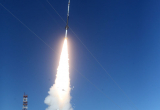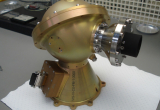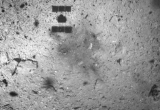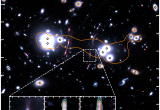The CLASP-2 telescope was successfully launched on April 11th 2019 by a sounding rocket from White Sands Missile Range (New Mexico, USA). The objective of the CLASP (Chromospheric LAyer SPectropolarimeter) project is to measure the magnetic field in the solar chromosphere using spectro-polarimetric measurements in the ultraviolet.
Latest News
5 years 1 week ago
5 years 1 month ago
The “Planetary and Solar System Sciences” Division of EGU (European Geophysical Union) has awarded to John Carter, associate astronomer at IAS, its 2019 “Oustanding Early Career Scientist” medal for his discoveries on the composition of the martian surface, in particular hydrated minerals and their implications on the climate history of Mars, and for his contributions to the interpretation of orbital spectral data.
5 years 1 month ago
On Monday, March 12th, IAS delivered the flight model of the in-flight calibration system (Calibration Unit, CU) of the VIS instrument of the Euclid mission. Euclid is the M2 mission of the ESA Cosmic Vision programme, whose scientific objective is to map the Universe to explain the cause of the acceleration of its expansion. It will achieve this by looking up to 10 billion years in the past and by closely tracking the shape and distribution of galaxies the Universe contains.
5 years 2 months ago
This critical operation, performed on February 22, 2019, constituted the most complex and risky part of the ISAS/JAXA Japanese mission: it required to bring the entire spacecraft in contact with the surface of Ryugu, entirely covered with boulders of all sizes. Its success demonstrates and translates an extraordinary and unique control of space operations by ISAS/JAXA engineers. A second sample collection could be performed in a few months, prior to the return to Earth: Hayabusa2 should leave Ryugu in December 2019, to land on Earth a year later. Our laboratories should thus get in 2021 samples collected at the very surface of one of the most ancient solar system objects, rich in particular of organics which might have played a major role in the evolution towards life on Earth.
5 years 5 months ago
Star-forming regions interact with their environment in massive galaxies
An international team of astronomers just witnessed how the sites of the most intense star formation in the early Universe communicate with their surroundings through rapid gas exchange. Their findings offer unprecedented insights into the most rapid evolutionary phase of massive galaxies, about 11 billion years ago.












